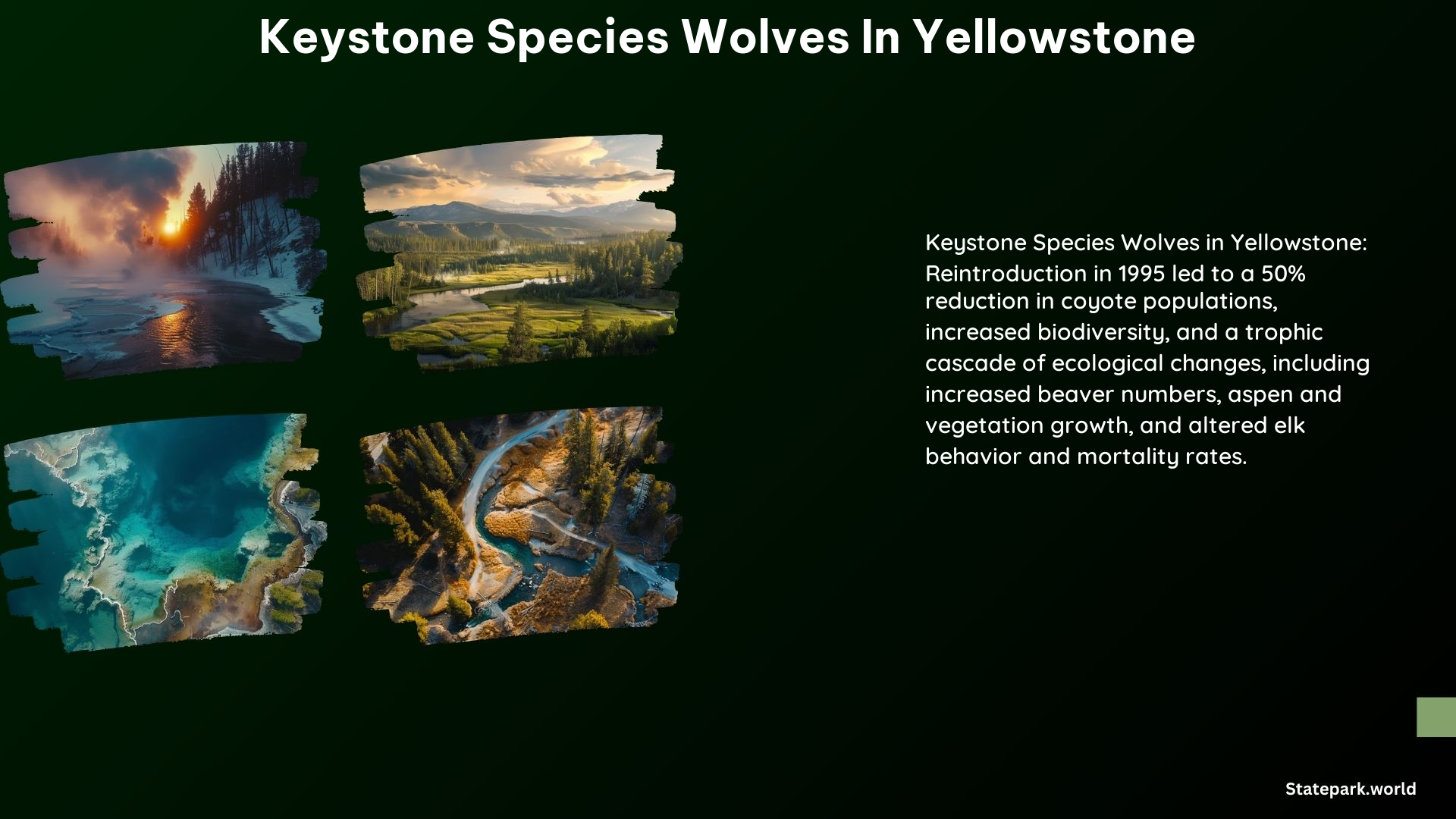The reintroduction of wolves in Yellowstone National Park in 1995 has had a profound impact on the ecosystem, demonstrating the critical role they play as a keystone species. This blog post explores the significance of wolves in Yellowstone, the trophic cascade they have triggered, and the far-reaching effects on the park’s biodiversity.
What is a Keystone Species?
A keystone species is a species that has a disproportionately large effect on its environment relative to its abundance. Removal of a keystone species can lead to dramatic changes in the ecosystem, often resulting in the loss of other species.
Wolves as a Keystone Species in Yellowstone

Wolves are considered a keystone species in Yellowstone National Park due to their significant influence on the ecosystem. Their reintroduction in 1995 has had a cascading effect on the park’s flora and fauna, leading to a remarkable transformation.
Trophic Cascade in Yellowstone
The reintroduction of wolves has triggered a trophic cascade, where the effects of the wolves’ presence cascade down through the food chain. This has led to changes in the behavior and populations of various species, including:
Elk
Wolves have made elk more vigilant and less likely to forage in open areas, leading to changes in their diet and behavior.
Coyotes
The presence of wolves has reduced the coyote population by 50%, allowing other species like foxes to thrive.
Scavengers
Wolves have become the primary reason for elk mortality, benefiting scavengers like ravens, eagles, magpies, coyotes, and bears.
Beavers
The increased presence of beavers has been linked to the return of wolves, as beavers are more likely to thrive in areas with fewer elk.
Ecological “Breathing Room”
The reduction of coyotes by wolves has opened up ecological “breathing room” for other species, allowing them to flourish in areas where coyotes previously dominated.
Scientific Research
The reintroduction of wolves in Yellowstone has provided a unique opportunity for scientists to study the effects of a keystone species on an ecosystem. Researchers are still working to fully understand the complex interactions between wolves and other species in the park.
Conclusion
The reintroduction of wolves in Yellowstone has demonstrated the critical role they play as a keystone species. Their presence has triggered a trophic cascade, leading to significant changes in the park’s ecosystem. This has important implications for our understanding of the interconnectedness of ecosystems and the importance of preserving keystone species.
References
- Living with Wolves. (n.d.). Wolves, A Keystone Species. Retrieved from https://www.livingwithwolves.org/wolves-a-keystone-species/
- PBS LearningMedia. (2014, November 5). Wolves of Yellowstone | EARTH A New Wild. Retrieved from https://ca.pbslearningmedia.org/resource/a58e3ca2-52ab-45f5-87ac-26ee0d681146/wolves-of-yellowstone-earth-a-new-wild/
- California Wolf Center. (n.d.). The Importance of Wolves. Retrieved from https://www.californiawolfcenter.org/biodiversity
- HHMI BioInteractive. (n.d.). Gray Wolf: Exploring Keystone Species. Retrieved from https://media.hhmi.org/my.logout.php3?errorcode=19
- Yellowstone Park. (2023, June 22). Wolf Reintroduction Changes Ecosystem in Yellowstone. Retrieved from https://www.yellowstonepark.com/things-to-do/wildlife/wolf-reintroduction-changes-ecosystem/.
